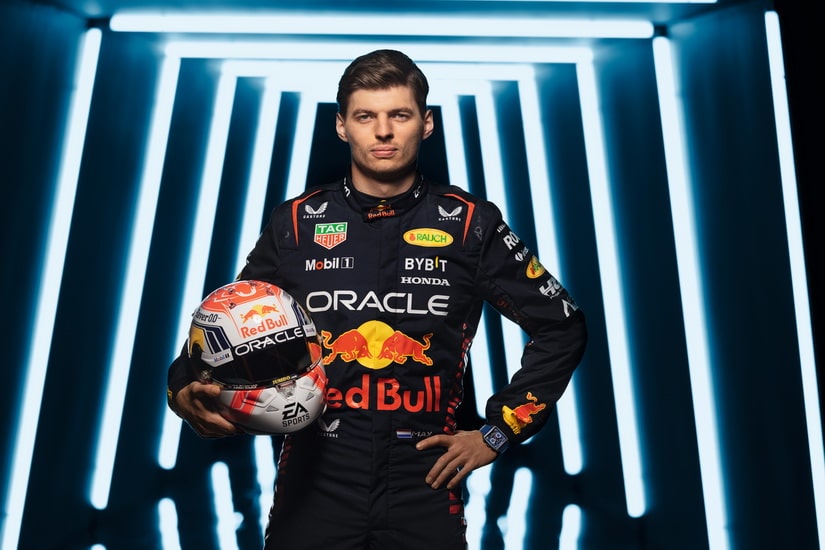For nearly two years, Red Bull Racing has been the undisputed titan of Formula 1. With relentless dominance, they’ve left their competitors in the dust. But in Miami, the tables turned in dramatic fashion as McLaren, once a team struggling for podium scraps, unleashed a pace and precision that left Red Bull in the rearview mirror. McLaren didn’t just win in Miami—they completely dismantled Red Bull’s invincibility. Max Verstappen may have started from pole, but by the end of the race, he was staring at the backs of both McLaren drivers, 40 seconds behind.

This unexpected turn of events marks a potential turning point for the 2025 season. Red Bull’s blunt senior advisor, Helmut Marko, didn’t mince words, describing McLaren’s performance as “depressing,” with a clear 7/10ths per lap deficit. This wasn’t a one-off mishap—it was a consistent, race-long gap that Red Bull simply couldn’t close. Could this be the beginning of the end for Red Bull’s dominance?
The Shocking Reality for Red Bull
When F1 arrived in Miami, the expectation was for another Red Bull triumph. Verstappen, in classic form, secured pole position with a blistering lap, setting the stage for what seemed like another routine victory. However, McLaren had other plans. As the race unfolded, it became clear that Red Bull’s race wasn’t just slipping away—it was being unmasked. McLaren, after months of quiet upgrades, unleashed the full potential of the MCL39, setting a blistering pace that Red Bull couldn’t match.
Marko’s comments weren’t just typical frustration. They were a recognition of McLaren’s true pace, which, for the first time in 2025, exposed Red Bull’s vulnerabilities. Red Bull has typically been the team to beat, but now they were being outpaced by McLaren in virtually every aspect of the race. Their 7/10ths per lap deficit wasn’t a fluke; it was a new reality that Red Bull had never had to confront before.

McLaren’s Strategic Evolution
This victory didn’t just happen by accident. It’s likely that McLaren has been hiding their true potential for some time, choosing to run in lower engine modes or delay certain upgrades to avoid tipping off Red Bull. Miami was the perfect battleground—a track with tight corners and long straights that challenge both tire management and chassis balance. McLaren’s MCL39 handled it all with ease. The drivers, Lando Norris and Oscar Piastri, were able to extract maximum performance from the car, showing incredible tire management and adapting to changing track conditions.
In contrast, Verstappen’s Red Bull struggled, especially with tire temperatures and brake instability, which robbed him of the confidence he usually has. This was a major factor in his inability to fend off McLaren’s charge. Red Bull had introduced a new floor upgrade designed to increase downforce and stability, but it seems the real-world results didn’t live up to the simulations. The upgrade may have compromised the car’s balance, making it harder for Red Bull to maintain the performance they had come to expect.
The Drivers: A Battle of Trust and Adaptability
Verstappen, for all his brilliance, thrives in a car that responds instantly to his commands. When that connection breaks—even slightly—his performance suffers. In Miami, despite his best efforts, Verstappen couldn’t hold off McLaren’s drivers, whose cars were simply more adaptable and better balanced. On the other side, McLaren’s Piastri and Norris delivered a flawless performance, showing a level of maturity and poise that belied their years.

Piastri’s victory wasn’t just about raw speed—it was a masterclass in tire management, racecraft, and handling pressure. Norris, though not taking the win, still played a crucial role in securing McLaren’s dominant 1-2 finish, proving that McLaren’s driver pairing is one of the strongest on the grid.
Red Bull’s Response: A Critical Crossroad
Now, the big question is how Red Bull will respond. For years, they’ve had the luxury of incremental upgrades, knowing their superiority on track would carry them through. But now that McLaren has closed the gap—and possibly surpassed them—they must act fast. Red Bull will need to innovate, perhaps rethink their entire aerodynamic concept, and find performance quickly. This is a tall order in the current cost-cap era, where every dollar must be spent wisely.
If Red Bull can’t regain their advantage, they risk losing both the Constructors’ and Drivers’ Championships. The psychological pressure is mounting within the team, with tensions beginning to show. Marko’s public comments reflect this, and with the dynamic between Red Bull’s leadership becoming more cautious, McLaren may exploit this internal noise to its advantage.

McLaren: A Rising Force
What we’re witnessing in 2025 could be the beginning of a true generational shift in Formula 1. McLaren, once a midfield team, has made a meteoric rise, challenging Red Bull’s long-standing dominance. With brilliant engineering, a strong leadership structure under Andreas Stella, and the technical minds of Peter Prodromou and David Sanchez, McLaren has crafted a car that is finally living up to its potential.
More importantly, they’ve built a team culture that is confident, hungry, and ready to challenge for the championship. Red Bull now finds itself in uncharted territory, trying to fend off a resurgent McLaren that is poised to take over the title battle.
Is Red Bull’s slump temporary, or is McLaren truly the team that will end Verstappen’s reign? The 2025 season has just taken a thrilling turn, and the next chapter in this championship battle is one that will keep fans on the edge of their seats.